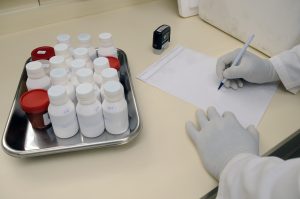The Future of Healing: How Regenerative Therapies Can Restore Your Health


In recent years, regenerative therapies have emerged as a groundbreaking frontier in medicine, promising to transform how we approach health and healing. These innovative treatments focus on repairing, replacing, or regenerating damaged tissues and organs, offering hope to patients with conditions that were once considered untreatable. This article explores the future of regenerative therapies, their current applications, and the potential they hold for restoring health.
Understanding Regenerative Therapies
Regenerative therapies are designed to stimulate the body’s natural healing processes and promote tissue regeneration. Unlike traditional treatments that often focus on managing symptoms, these therapies aim to address the root cause of illness or injury by encouraging the body to repair itself.
Stem Cell Therapy: A Game Changer in Healing
Stem cell therapy involves using undifferentiated cells—cells that have the potential to become various types of specialized cells—to repair or replace damaged tissues. One of the most promising applications of stem cell therapy is in the treatment of degenerative diseases such as Parkinson’s disease, multiple sclerosis, and arthritis. By introducing healthy stem cells into damaged areas, researchers hope to stimulate the growth of new, healthy tissues and restore function. Moreover, stem cell therapy is being explored for its potential in healing spinal cord injuries, where the ability to regenerate nerve cells could significantly improve mobility and quality of life.
Tissue Engineering: Building New Tissues
Tissue engineering combines cells, biomaterials, and growth factors to create new tissues or organs in the lab. This approach aims to produce functional tissue that can be implanted into patients to replace damaged or diseased tissues. One of the most exciting developments in tissue engineering is the creation of lab-grown organs. Scientists have made significant strides in developing functional heart valves, skin grafts, and even complex organs like the liver and kidneys. While fully functional lab-grown organs are still in the experimental stage, the progress made thus far is promising and could revolutionize transplant medicine.
In addition to organ regeneration, tissue engineering is also being used to develop advanced wound-healing solutions. For example, researchers are working on bioengineered skin grafts that can accelerate the healing process for patients with severe burns or chronic wounds.
Gene Therapy: Correcting Genetic Defects
Gene therapy involves altering the genetic material within a patient’s cells to treat or prevent disease. This approach can potentially address genetic disorders by correcting defective genes or introducing new genes to enhance the body’s ability to fight disease. One of the most notable successes in gene therapy is the treatment of inherited retinal diseases that cause blindness. By introducing functional copies of genes into the retina, researchers have been able to restore vision in some patients.
Gene therapy is also being investigated for its potential to treat various types of cancer. By modifying immune cells to target cancer cells more effectively, researchers hope to develop personalized cancer treatments that are more effective and less harmful than traditional therapies.
The Role of Personalized Medicine
As regenerative therapies continue to advance, personalized medicine is becoming increasingly important. Personalized medicine involves tailoring treatments to each patient’s characteristics, such as their genetic profile, lifestyle, and specific health conditions.
In regenerative medicine, personalized approaches can enhance the effectiveness of treatments. For example, stem cell therapies can be customized based on a patient’s genetic makeup, ensuring that the cells are well-matched and have a higher likelihood of success. Similarly, gene therapies can be designed to target specific genetic mutations unique to each patient.
Challenges and Considerations
While the potential of regenerative therapies is immense, some several challenges and considerations must be addressed. One major challenge is the high cost of these treatments, which can be prohibitive for many patients. Additionally, the long-term safety and efficacy of regenerative therapies are still being studied, and more research is needed to understand their impact fully. Ethical considerations also play a significant role in the development of regenerative therapies. For example, the use of embryonic stem cells raises moral questions about the source of these cells and their potential for creating human clones.
Looking Ahead: The Future of Regenerative Medicine
The future of regenerative medicine is filled with promise and potential. As research and technology continue to advance, we can expect to see more breakthroughs that will transform how we approach health and healing.
In the coming years, regenerative therapies are likely to become more accessible and affordable, making them available to a broader range of patients. Advances in stem cell research, tissue engineering, and gene therapy will continue to push the boundaries of what is possible, offering new hope for those with previously untreatable conditions. Moreover, the integration of regenerative therapies with other cutting-edge technologies, such as artificial intelligence and nanotechnology, could further enhance their effectiveness and precision.
Regenerative therapies represent a new era in medicine, offering innovative solutions for restoring health and healing. With their ability to repair, replace, and regenerate damaged tissues and organs, these therapies hold the potential to transform the way we approach healthcare. As research and development continue to advance, it may become a cornerstone of modern medicine, providing hope and healing to patients around the world.
